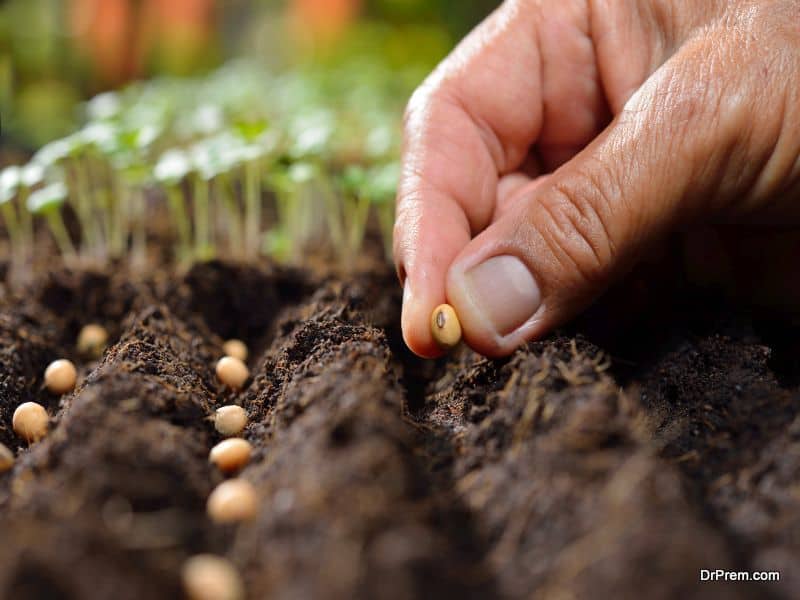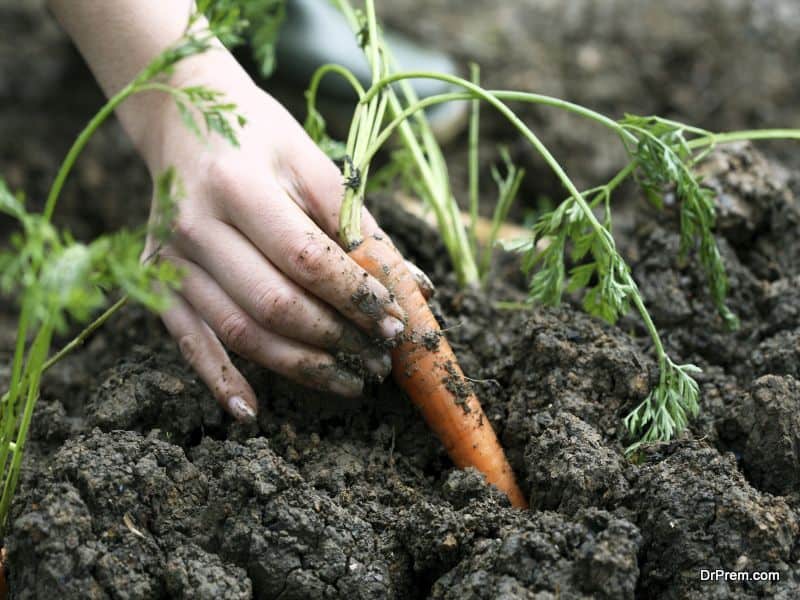Do you have a backyard lawn with sunlight and fertile soil? Start a vegetable garden from scratch in this piece of land. Working in a garden is a rewarding hobby, resulting in your family and friends feasting on the yield. The garden will need an hour or two of work per week. Many plants require no experience in gardening. And they are easy and quick vegetables to grow.
The harvest can be used often in meals. The veggie garden will not replace groceries. But, they will shorten the grocery list. Many vegetables, like potatoes, have a longer harvest time and take up a lot of space. You should select ‘cut and come again’ plants. These plants will grow back in a week or two. Also, homegrown vegetables and herbs will save money.
The primary initial steps to start a garden are:
- Finding the best location
- Picking layout ideas
- Choosing the plants
Finding the best location for a vegetable garden:
 This step is essential in starting a vegetable garden. Having the right spot is an excellent start to the garden. Mainly, the garden’s position is dependent on the sun. Most vegetables need 6-8 hours of sunlight every day. If there is not much sunlight, the light can be reflected with walls painted white or mirrors.
This step is essential in starting a vegetable garden. Having the right spot is an excellent start to the garden. Mainly, the garden’s position is dependent on the sun. Most vegetables need 6-8 hours of sunlight every day. If there is not much sunlight, the light can be reflected with walls painted white or mirrors.
Sun-mapping is vital for the vegetable garden layout. North facing garden are mostly shady. With about 3 hours of sun, carrots, beets, and leafy greens can grow here. East facing gardens get the morning sun. This is a great spot for growing spinach, kale, and cauliflower. West facing vegetable gardens are in the hot noon sun. With cool climates, this is an ideal place for growing tomatoes. But in warm climates, the plants will need more shade. South facing garden are suitable for hardy plants like tomatoes, okra, watermelon, and eggplant.
Picking out layout ideas for the garden
 You can plant in the soil directly if the ground is soft and fertile. Also, there need to be no fungal diseases in the land. Directly farming in the soil is best for those who plan to have a large garden. Gardening in the soil is cheap, and the water and nutrients are well-retained. But this kind of farming leads to pests and weeds. You should look into pest and weed control in this case.
You can plant in the soil directly if the ground is soft and fertile. Also, there need to be no fungal diseases in the land. Directly farming in the soil is best for those who plan to have a large garden. Gardening in the soil is cheap, and the water and nutrients are well-retained. But this kind of farming leads to pests and weeds. You should look into pest and weed control in this case.
Using raised beds is best for gardens with dense soil that is hard to work on. There are many types of raised beds. You can choose the best kind and height in your garden. Raised beds are built anywhere, even if the yard has weeds. This type of gardening is ideal for older people who cannot bend over. The raised beds are customizable to your needs. But this limits the number of plants and can be expensive to build.
Containers are the best option for growing plants on your sunny balcony or patio. Containers are the best for plants where there are weeds in the raised beds and the ground. This option is ideal with limited space. Also, containers are used for a small garden. Most herbs and vegetables can grow in containers.
Choosing the plants to start a vegetable garden from scratch
 Choosing the plants is the most fun and simple part of having a vegetable garden. But this can also be very overwhelming with the many options.
Choosing the plants is the most fun and simple part of having a vegetable garden. But this can also be very overwhelming with the many options.
The best place to start while picking plants for your garden is your favourite vegetables. But you cannot only eat your favourite vegetables. So it is also essential to include the vegetables and herbs that you use often.
If you love salads, grow leafy greens like spinach and basil. If you enjoy making a homemade Bloody Mary, grow tomatoes, celery, and mint. In the same way, if you or your family does not like a particular vegetable, you do not have include that plant or limit the harvest with one plant.
Once you have the primary plants that you need, you can try to plant new herbs and vegetables. You can reserve a small plot in your garden for growing new plants.
When choosing plants to grow, you must consider the duration of the growing season. Beginners can start with a plant that are quick vegetables to grow. For examples, tomatoes, eggplant, many other vegetables, and fruits grow with a 90 day growing period.
Herbs’ growing period is around 2-3 weeks. They can grow outside in the garden or indoors. But make sure to pair your plants with compatible crops like beans and squash is paired with corn, tomatoes, and basil with onions and so on.
Your garden can also include hardy plants. These are plants that can grow in extreme weather conditions. These plants can be fruits, vegetables or flowers like peonies, apples, broccoli, cabbage, and garlic.
After accessing your situation, you would have landed on a location, type of gardening and the plants you want to grow. Before you start a vegetable garden from scratch, draw out a plan with optimal usage of space. Plants can also grow vertically.
When picking out the layout for your garden, it is essential to start with a plan. The plan needs to cover soil usage, using raised beds or containers.
 The plants in the garden need a good irrigation system. Watering your veggie garden is essential. Set up a planned irrigation system. Sprinklers or a hose is not ideal. But if you cannot set up irrigation, water the plants with a hose. Watering the garden for 30 minutes once or twice a week is ideal. The sunny part of the garden is the driest, and it must be well irrigated.
The plants in the garden need a good irrigation system. Watering your veggie garden is essential. Set up a planned irrigation system. Sprinklers or a hose is not ideal. But if you cannot set up irrigation, water the plants with a hose. Watering the garden for 30 minutes once or twice a week is ideal. The sunny part of the garden is the driest, and it must be well irrigated.
Pest and weed control is also critical. As pest and weeds can harm your crop and soil — a mulch of 2-3 inch layer around each plant blocks weed and pests.
All your plants need to be taken care of, mainly the edible ones. Having to start a vegetable garden from scratch can be intimidating. But learn to enjoy it as a hobby. Do not view it from the point of sustenance. The yield is just a bonus in addition to having a fresh and green garden.


